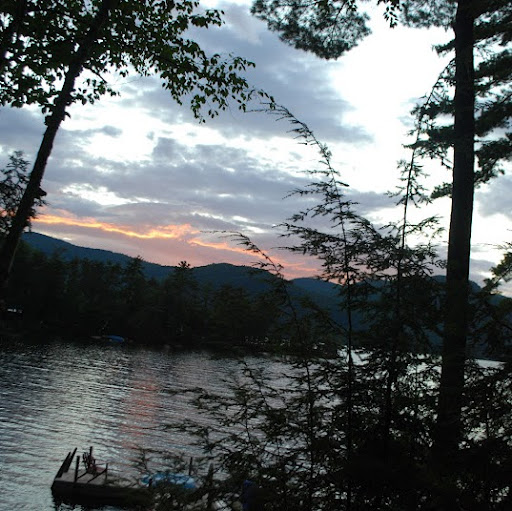Erin K Pettit
age ~44
from O Fallon, MO
- Also known as:
-
- Erin K Dempsey
- Phone and address:
- 8 Statesman Ct, Saint Peters, MO 63368
Erin Pettit Phones & Addresses
- 8 Statesman Ct, O Fallon, MO 63368
- Saint Peters, MO
- Overland, MO
- Carlyle, IL
- Saint Charles, MO
Resumes

Erin Pettit
view sourceGoogleplus

Erin Pettit

Erin Pettit

Erin Pettit

Erin Pettit
view source
Erin Pettit
view source
Erin Pettit
view source
Erin Pettit
view source
Erin S Pettit
view source
Erin Pettit Traeger
view source
Erin Pettit
view source
Erin Pettit Wells
view sourceNews

The eerie 'blood' waterfall that's been flowing from a glacier in Antarctica for centuries
view source- "[The] Taylor Glacier is the coldest known glacier to have persistently flowing water," lead author of the 2017 study, Erin Pettit, a professor in the College of Earth, Ocean and Atmospheric Sciences at Oregon State University, said in a statement at the time.
- Date: Sep 20, 2025
- Category: Science
- Source: Google

Antarctica's Blood Falls Helps Unravel the Inner Workings of Glaciers
view source- intriguing is the fact that liquid water can exist inside and beneath the frozen glacier at all. As University of Alaska, Fairbanks, glaciologist Erin Pettit explains in apress release: While it sounds counterintuitive, water releases heat as it freezes, and that heat warms the surrounding colder ice.I
- Date: May 02, 2017
- Source: Google

Mystery of Antarctica's blood red glacial waterfall finally explained
view source- "While it sounds counterintuitive, water releases heat as it freezes, and that heat warms the surrounding colder ice," glaciologist Erin Pettit said, noting that the heat and the freezing temperature of salty water make the liquid movement possible. "Taylor Glacier is now the coldest known glacier t
- Date: May 01, 2017
- Source: Google

Astonishing discovery in Antarctica stuns scientists
view source- Lead author Jessica Badgeley, then an undergraduate student at Colorado College, worked with University of Alaska Fairbanks glaciologist Erin Pettit and her research team to understand this unique feature. They used a type of radar to detect the brine feeding Blood Falls.
- Date: Apr 30, 2017
- Source: Google

Antarctica's Blood Falls: not so mysterious, but still freaky as heck
view source- came from beneath the glacier," lead study author Jessica Badgeley, a graduate student at the University of Washington, told PopSci. Badgeley conducted the research while she was an undergrad at Colorado College, working with the University of Alaska Fairbanks glaciologist Erin Pettit and her team.
- Date: Apr 28, 2017
- Source: Google

Melting Glaciers Create Noisiest Places In The Ocean, But What Will Happen To ...
view source- an important aspect of the environment in which marine mammals and fish live. Like teenagers at a loud rock concert, the seals and whales modify their behavior depending on the ambient sound levels," said Erin Pettit, a glaciologist from the University of Alaska Fairbanks Department of Geosciences.
- Date: Mar 06, 2015
- Category: Sci/Tech
- Source: Google

Melting glaciers make oceans incredibly noisy, researchers say
view source- to 20,000 Hertz, which is the upper limit of human hearing. Erin Pettit, a University of Alaska Fairbanks glaciologist involved in the study, says that local whales and seals modify their behavior depending on the ambient sound levels similar to the way teenagers might act at a loud rock concert. Sea
- Date: Mar 06, 2015
- Category: Sci/Tech
- Source: Google

Bubbly Glaciers Make For A Noisy Environment
view source- going on, but it also is an important aspect of the environment in which marine mammals and fish live. Like teenagers at a loud rock concert, the seals and whales modify their behavior depending on the ambient sound levels," Erin Pettit, a glaciologist from the University of Alaska Fairbanks, said.
- Date: Mar 06, 2015
- Category: Sci/Tech
- Source: Google
Classmates

Erin Pettit
view sourceSchools:
El Granada Elementary School El Granada CA 1982-1988
Community:
Donna Wong

Erin Pettit
view sourceSchools:
Avery Elementary School Hilliard OH 1988-1994
Community:
Linda Adkins, David Klase

Erin Pettit
view sourceSchools:
South Central High School Greenwich OH 1992-1996
Community:
Ralphy Rivera, Shannon Simon, Robert Feeman, Kimberly Coleman

Erin Pettit (Lair)
view sourceSchools:
Gloversville High School Gloversville NY 1979-1983

Broadway Elementary Schoo...
view sourceGraduates:
Erin Pettit (1970-1980),
Thelma Gladd (1957-1961),
Sandra Daphnis (1950-1961),
Gordon Burman (1948-1955),
Robert Loren Johnson (1951-1952)
Thelma Gladd (1957-1961),
Sandra Daphnis (1950-1961),
Gordon Burman (1948-1955),
Robert Loren Johnson (1951-1952)

Avery Elementary School, ...
view sourceGraduates:
Erin Pettit (1988-1994),
Matt Johnson (1992-1995),
Eric Floehr (1976-1982),
Joni Smith (1989-1991),
Nichole Dechicco (1986-1990),
Christen Carroll (1994-1998)
Matt Johnson (1992-1995),
Eric Floehr (1976-1982),
Joni Smith (1989-1991),
Nichole Dechicco (1986-1990),
Christen Carroll (1994-1998)

South Central High School...
view sourceGraduates:
Erin Pettit (1992-1996),
Kathy Pfirsch (1975-1979)
Kathy Pfirsch (1975-1979)

Erin Pettit, Class of 199...
view sourceYoutube
Myspace

Erin Pettit
view sourceFlickr
Get Report for Erin K Pettit from O Fallon, MO, age ~44













